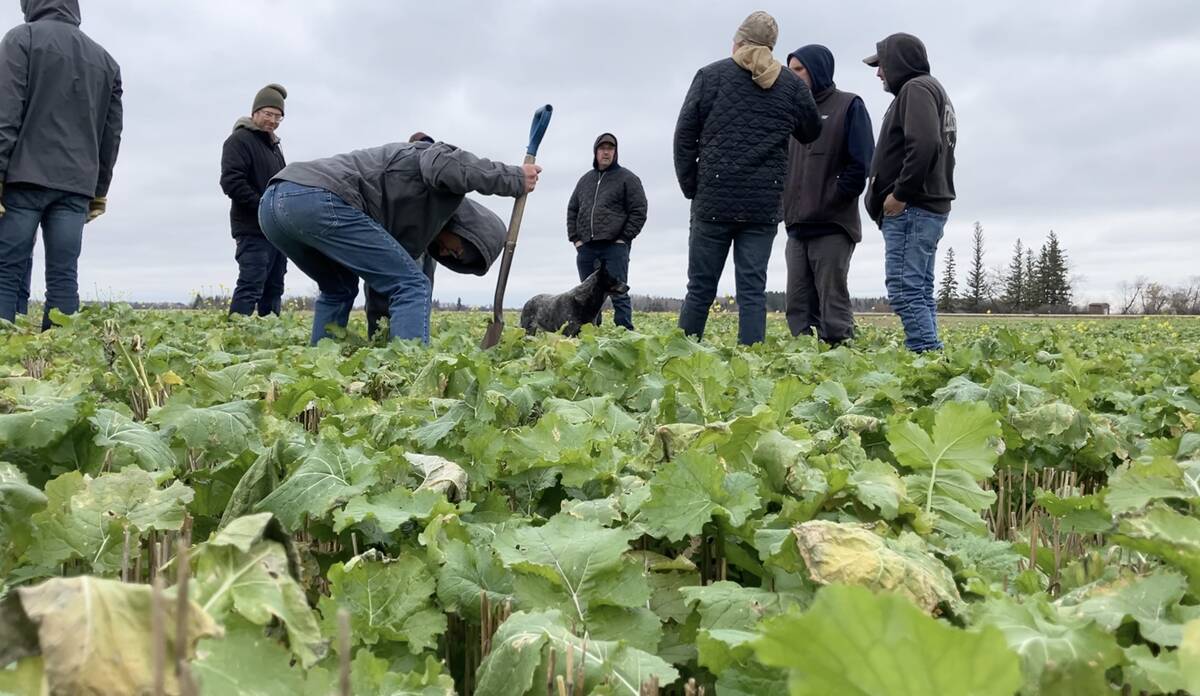Another year and another Ag in Motion is in the books.
It’s easy to get excited about ag tech trends during the three-day show. It feels like every innovator in Western Canada who can make the trip to Langham, Sask., does so.
If you’ve never seen an aerial shot of the event at full throttle, it’s eyebrow-raising. More than 100 acres are filled with exhibitors who highlight the latest in machinery, grain handling, agronomy, ag-related services, animal handling tech, plant genetics and agri-chemical offerings.
Read Also

VIDEO: Drone seeding aids cover crop planting
Manitoba cover crop trials test drone seeding against a traditional drill; the drone-seeded areas stood up on biomass production.
Highlights this year included remote livestock watering systems, a virtual fence system and a Swedish automated pressure washer that could give western Canadian livestock operations a new sanitation weapon against diseases like porcine epidemic diarrhea.
There were new crop varieties and herbicide options. There was new iron on display and spray drones, along with lots of discussion about lacking regulatory approval for drone technology. There was a fuel price hedging app that walked away with an innovation award, a new type of insurance and a crop nutrition lab that a farmer or consultant can bring to the field.
Agriculture firms chose AIM as their vehicle to officially launch 37 new products or innovations this year, according to Glacier FarmMedia’s Phil Franz-Warkentin. It was a record for the show.
All of that makes it feel as though ag is taking off into the space age. New and better digital and precision technologies are coming out all the time. Some generate excitement at the academic level but falter on the rocky path to commercialization.
As Geralyn Wichers reports in this issue, in her story about precision technology adoption in the livestock sector, the reality is still a little closer to the ground. Some producers see enough promise that they’re willing to risk the capital and undertake the learning curve needed to adopt the technology.
In November 2023, the Co-operator spoke to Rick Rutherford, who has spent the last decade trying to collect his farm’s data and use it to his advantage. He’s gone so far as to volunteer his farm as a guinea pig for new ag practices, equipment and technology through collaboration with EMILI, a Manitoba-based digital ag accelerator.
But even as an advocate for increasingly technological and data-driven farming, Rutherford pointed out logistical issues that hold back adoption.
There is still the problem of poor connectivity in rural Canada. Price is a barrier, and it’s hard to argue that producers should shell out big bucks for a technology that be quickly overtaken by new advances.
As livestock tech experts noted when they gathered in Winnipeg earlier this month, and as Wichers reported, economic risk is a real and present barrier to getting precision systems incorporated on livestock farms.
There are also valid questions about data ownership and cybersecurity. Those were punctuated by recent cyberattacks affecting Canadian agriculture. In Western Canada, the most recent of those saw cardlocks temporarily shut down and some grocery shelves noticeably emptier for weeks after Federated Co-operatives Ltd. had to fend off a cybersecurity incident in late June.
Outside of agriculture, those who bought event tickets through Ticketmaster were warned in early July that their data might have been compromised following a breach.
Incidents like those do little for the confidence of producers who are told that data is the future and digital agriculture will make their operations leaner, more efficient and more profitable.
Tech adoption in agriculture will happen. Policy and customers are creating an environment where the cost-benefit ratio is tipping further into benefit. Early adopters will work out the kinks of new tech. Access is becoming easier, with more equipment incorporating innovations as standard features.
And while the experts cited by Wichers point to lack of farmer knowledge or commercially viable technologies, the lineup at AIM shows that the number of entrants into that market is growing all the time.
















